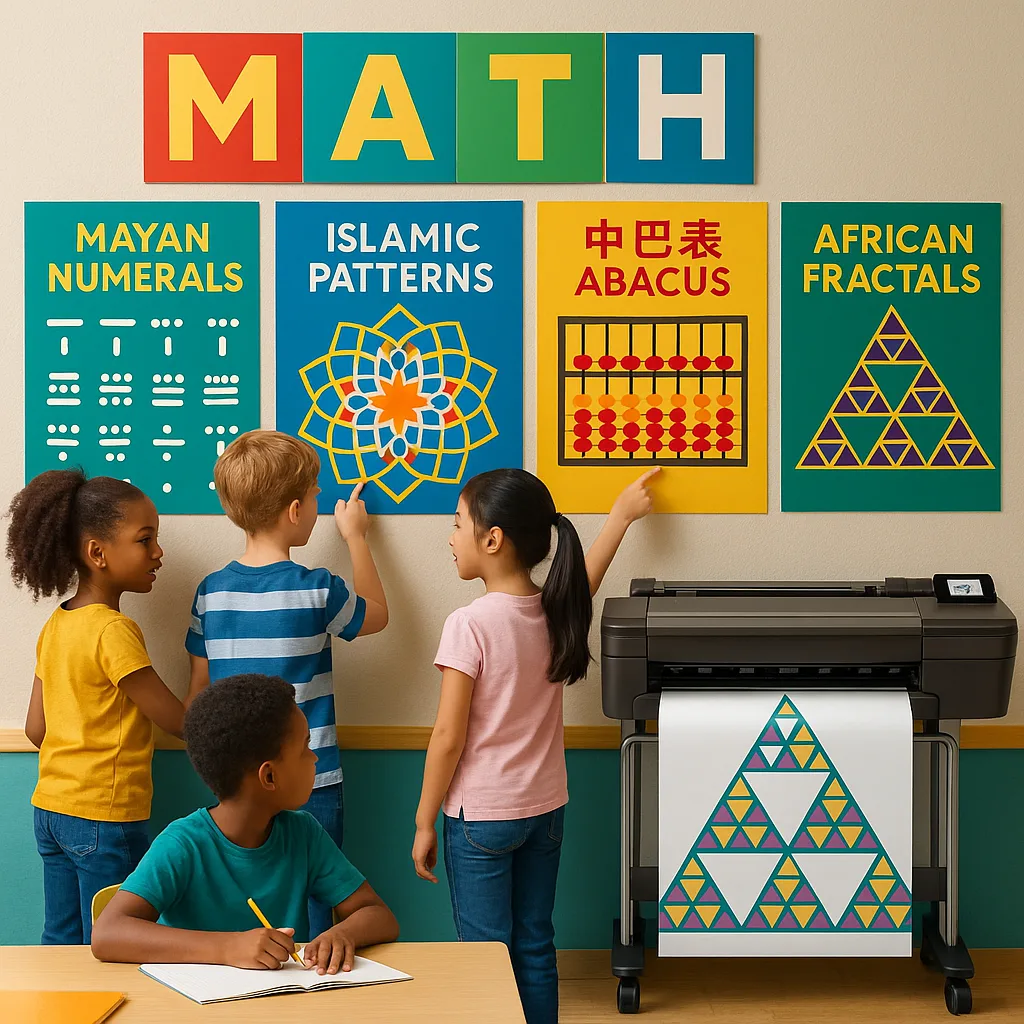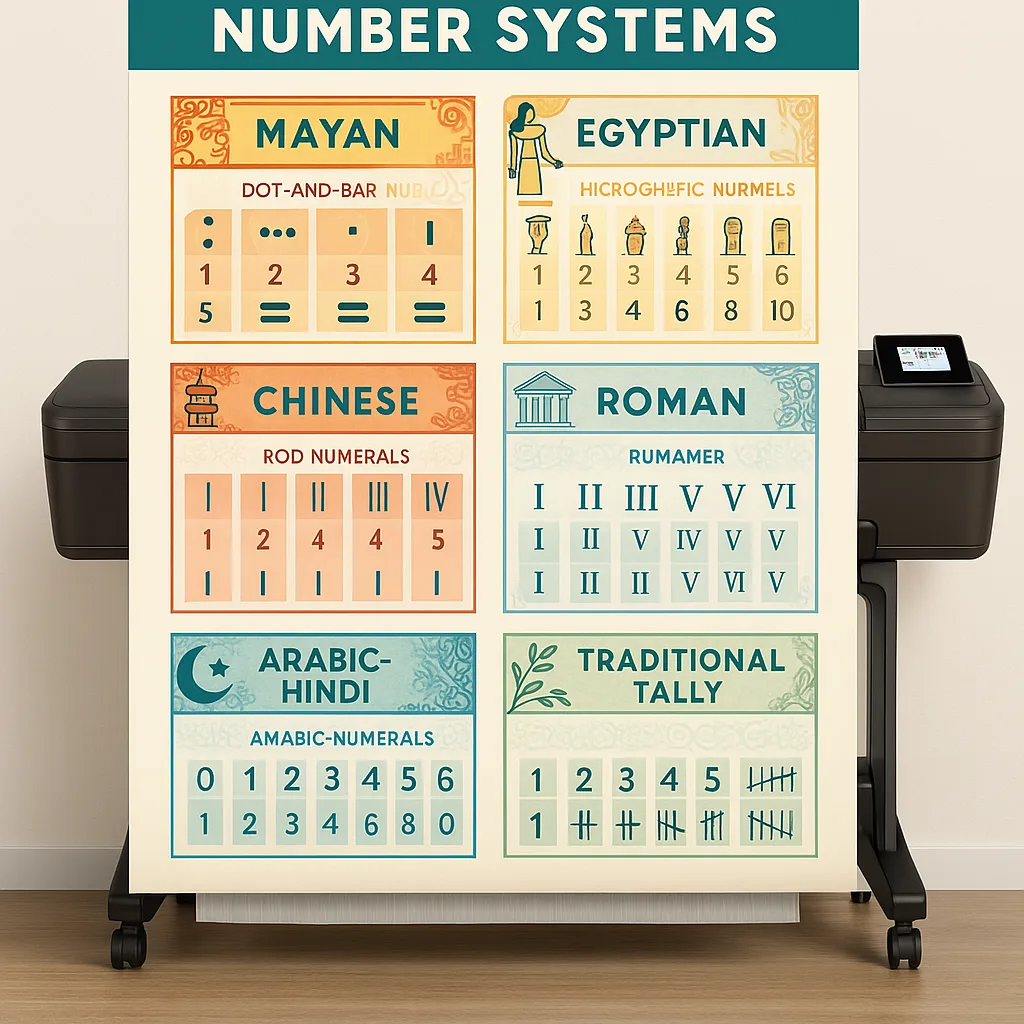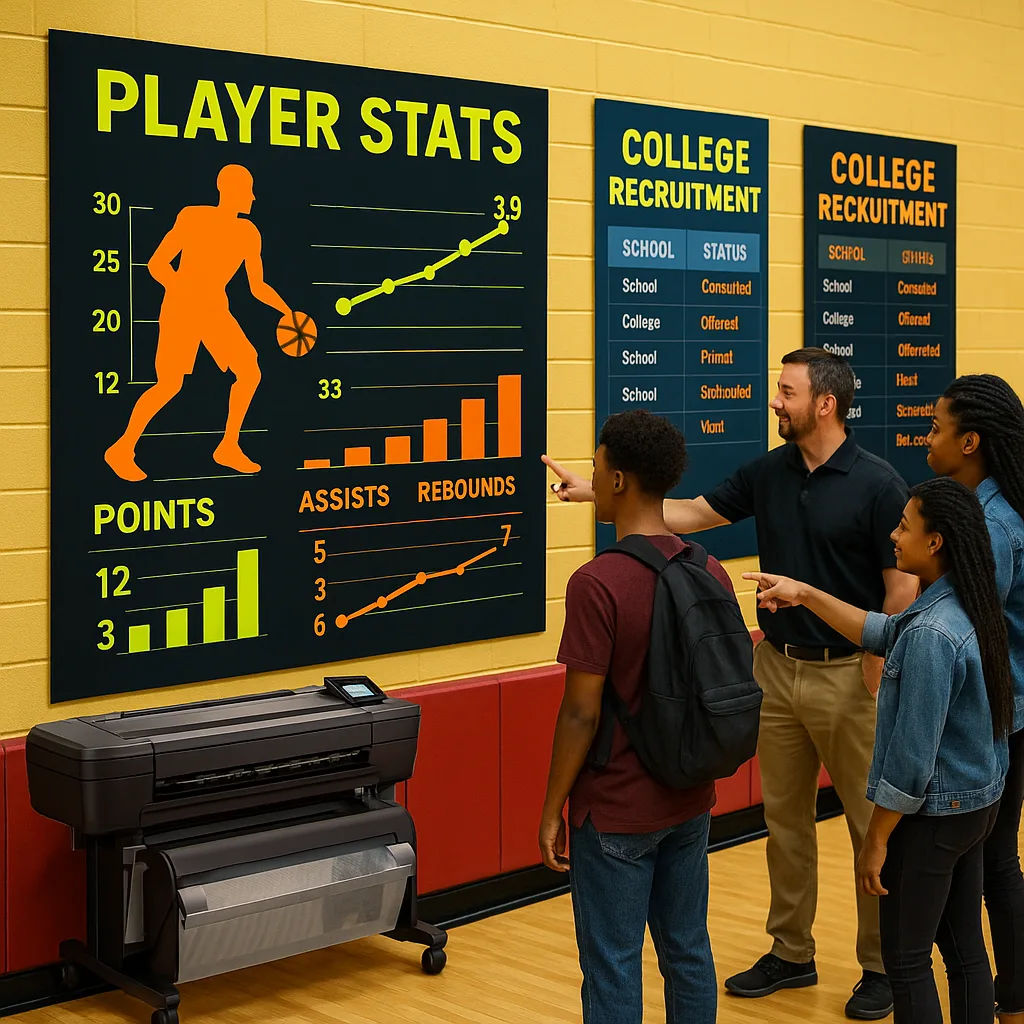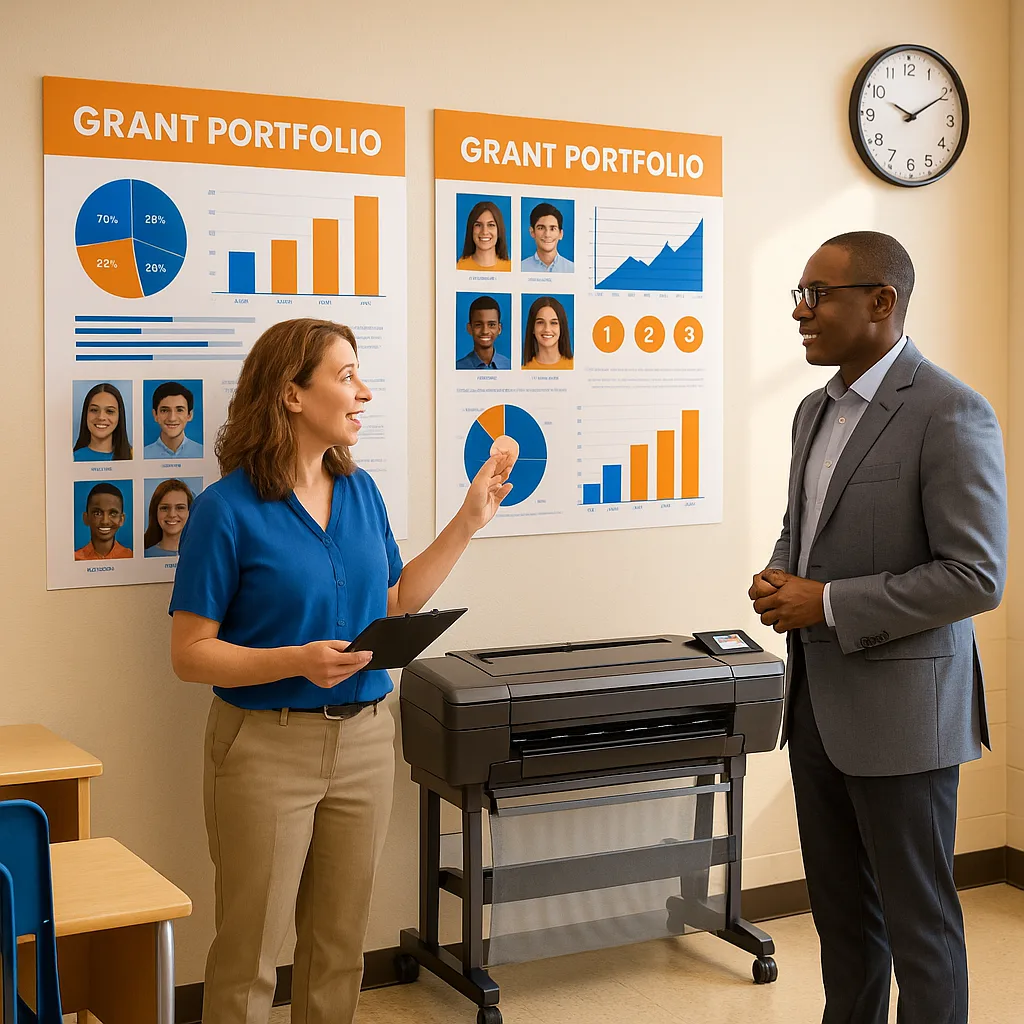
Classroom Poster Maker: Culturally Responsive Math Walls
Picture this: Maria, a third-grader from Guatemala, lights up when she sees the Mayan number system displayed alongside base-ten blocks on your math wall. Meanwhile, Ahmed recognizes the geometric patterns from Islamic art woven into fraction lessons. This is the power of culturally responsive mathematics displays—and with a classroom poster maker, creating these inclusive visual learning environments has never been more accessible. When we move beyond simple translation to embrace true mathematical multilingualism, we validate every student’s mathematical heritage while building stronger conceptual understanding for all learners using a classroom poster maker math walls approach.
Understanding Mathematical Multilingualism Beyond Translation
Traditional math walls often reflect a single mathematical worldview, typically rooted in Western approaches. However, mathematical thinking exists in every culture, from the intricate beadwork patterns of Indigenous peoples to the sophisticated calculating methods of ancient Chinese mathematicians. True mathematical multilingualism means creating displays that acknowledge these diverse problem-solving traditions.
Research from the National Council of Teachers of Mathematics shows that students perform better when they see their cultural mathematical practices validated in the classroom. Therefore, moving beyond word-for-word translation to incorporate actual mathematical concepts from different cultures creates deeper engagement and understanding.
For instance, instead of simply translating “fraction” into multiple languages, we can showcase how different cultures visualize and work with parts and wholes. Egyptian hieroglyphic fractions, Chinese rod numerals, and Indigenous beading patterns all offer unique perspectives on mathematical relationships that enrich everyone’s understanding.

Key Principles for Classroom Poster Maker Math Walls
Multiple Representations
Deep Understanding
Show the same concept through different cultural lenses to build robust mathematical understandingAuthentic Context
Cultural Accuracy
Present mathematical concepts within their original cultural contexts with proper attributionLiving Mathematics
Dynamic Learning
Connect historical practices to contemporary applications and student experiencesDesigning Culturally Rich Mathematical Displays
Creating culturally responsive math walls requires thoughtful planning and authentic resources. Start by surveying your student population to understand their cultural backgrounds and mathematical traditions. Partner with families and community members who can share mathematical practices from their heritage.
Next, organize your displays thematically rather than by single concepts. For example, a section on “Patterns in Our World” might feature:
– Navajo weaving designs demonstrating geometric transformations
– African fractals found in traditional architecture
– Fibonacci sequences in Indian temple designs
– Islamic tessellations showing symmetry principles
Remember to include contemporary applications alongside historical examples. Modern engineering projects from different countries, international approaches to problem-solving, and diverse mathematicians’ contributions help students see mathematics as a living, global discipline.
Perfect for Math Walls!
The Education Express 24 makes creating multilingual displays simple and affordable.
Ethnomathematics Integration Strategies
Showcase diverse number systems to help students understand that our base-ten system is just one of many mathematical approaches. Include visual representations of how different cultures group and represent quantities.
Display geometric concepts through cultural art forms: Japanese origami for transformations, Native American beadwork for symmetry, and African textiles for tessellations and fractals.
Implementation with Your Color Poster Maker Machine
A color poster maker machine transforms your vision for culturally responsive math walls into vibrant reality. The key is leveraging the technology’s capabilities to create displays that are both visually striking and pedagogically sound.
Start with high-contrast designs that make mathematical concepts clear across languages and symbol systems. Use the machine’s color capabilities to create visual coding systems—perhaps warm colors for one cultural tradition and cool colors for another, helping students make connections while maintaining distinctions.
Consider creating modular poster sets that can be rearranged as you explore different mathematical concepts. For instance, when teaching fractions, you might display:
– Ancient Egyptian unit fractions with their unique notation
– Chinese fraction representations using rod numerals
– Modern pie charts and bar models
– Traditional textile patterns showing parts of wholes
The beauty of using a color poster maker machine lies in its flexibility. You can quickly produce new displays as you discover additional cultural connections or as your student population changes. This responsiveness ensures your math walls remain relevant and inclusive throughout the school year.
Meeting State Standards Through Cultural Mathematics
Explore place value through Babylonian, Mayan, and Hindu-Arabic systems. Compare calculation methods across cultures while meeting core numeracy standards.
Use Islamic geometric patterns, Native American designs, and African fractals to teach transformations, symmetry, and spatial reasoning.
Examine repeating patterns in global textiles, architecture, and music. Connect cultural patterns to algebraic thinking and functions.
Present data visualization methods from different cultures. Show how various societies track and interpret information mathematically.
Transform Your Math Walls Today!
Ready to create math walls that celebrate mathematical diversity while building stronger conceptual understanding? The Education Express 36 provides the perfect canvas for large-scale culturally responsive displays. With its 36-inch width, you can create stunning visual narratives that connect mathematical concepts across cultures.
Sustaining Your Culturally Responsive Math Environment
Creating culturally responsive math walls is just the beginning. To maintain their impact, establish a regular refresh cycle that aligns with your curriculum and celebrates different mathematical traditions throughout the year. Consider creating a mathematical heritage calendar that highlights contributions from various cultures during relevant units.
Involve students in the creation process. When they research and design posters showcasing mathematical concepts from their own or other cultures, the learning becomes deeper and more personal. A classroom poster maker enables this student ownership by making production quick and accessible.
Document the impact of your culturally responsive displays through student feedback, assessment data, and family responses. This evidence not only validates your approach but also helps secure continued support and funding for your inclusive mathematics program. Share success stories with colleagues to spread these practices throughout your school.
Finally, remember that mathematical multilingualism is an evolving practice. As you learn more about your students’ backgrounds and discover new mathematical traditions, your displays should grow and change. This dynamic approach keeps your math walls fresh, relevant, and truly representative of the global mathematical community your students are part of.









